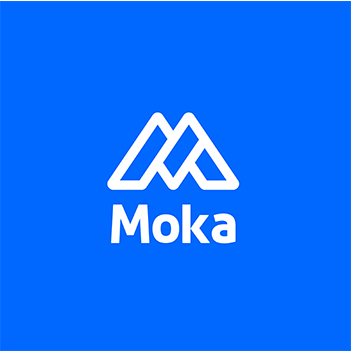Why Time-to-Productivity Matters for Hiring Success

When you hire someone new, how quickly they start contributing matters. That’s where time-to-productivity comes in. It’s not just about filling a position—it’s about how fast your new hire can make an impact. Shortening this timeline saves money and boosts morale. For example:
Faster productivity reduces training costs and downtime.
Employees who feel supported perform better.
Quick contributions help your company adapt to market changes.
By focusing on time-to-productivity, you ensure your team stays agile and ready to meet goals. It’s why time-to-productivity should be a key hiring metric for your business.
Key Takeaways
Time-to-productivity shows how fast new workers can help. Making this time shorter improves teamwork and happiness.
Planned onboarding programs are important. They give clear steps and help new workers fit in and do well faster.
Clear job roles and tasks stop confusion. When workers know their jobs, they work better and learn faster.
Spending on things like mentors and training tools helps new workers. This support makes them work faster and builds better teamwork.
A good company culture keeps workers interested. When workers feel part of the company, they work better and stay longer.
Why Time-to-Productivity Should Be a Key Hiring Metric
Defining time-to-productivity in hiring
Time-to-productivity measures how long it takes for a new hire to become fully effective in their role. It’s not just about showing up to work—it’s about reaching a point where they can handle tasks independently and contribute to your team’s goals. You can track this by monitoring milestones, like completing training or hitting performance targets. For example, a salesperson might be considered productive once they meet their first sales quota.
Why does this matter? Understanding time-to-productivity helps you evaluate how well your onboarding and training programs are working. If new hires take too long to ramp up, it could signal gaps in your processes. On the flip side, a shorter time-to-productivity means your team gets the help they need faster, boosting overall efficiency.
The connection between time-to-productivity and business outcomes
When new hires become productive quickly, your business benefits in multiple ways. First, they start contributing to revenue or project goals sooner. This is especially important in fast-paced industries where every day counts. Second, a faster ramp-up reduces the workload on existing employees who might otherwise spend extra time coaching or covering for the new hire.
Think about it: if your team spends less time training and more time focusing on their own tasks, productivity across the board improves. Plus, employees who feel supported during their early days are more likely to stay with your company. According to the Brandon Hall Group, effective onboarding can improve retention and productivity by 72%. That’s a win-win for everyone.
The financial and operational costs of delayed productivity
Delayed productivity doesn’t just slow down your team—it hits your bottom line. When new hires take longer to get up to speed, you’re essentially paying for unproductive time. This can lead to higher training costs, missed deadlines, and even strained relationships with clients.
A study ranked payment delays as the third most significant factor affecting productivity. These delays impact cash flow, equipment operations, and overall project timelines. The longer it takes for a new hire to contribute, the more these issues compound. By focusing on reducing time-to-productivity, you can avoid these costly setbacks and keep your business running smoothly.
Factors That Influence Time-to-Productivity

The importance of structured onboarding programs
A well-structured onboarding program can make all the difference in how quickly new hires become productive. When you provide a clear roadmap for their first few weeks, they feel more confident and prepared to tackle their responsibilities. Studies show that companies with strong onboarding processes see an 82% improvement in new hire retention and a 54% surge in productivity.
Here’s why structured onboarding works:
It breaks down the overwhelming process of starting a new job into manageable steps.
It ensures new hires understand their role and how they fit into the bigger picture.
It fosters a sense of belonging, which boosts morale and engagement.
By investing in onboarding, you’re not just helping new employees succeed—you’re also setting your team up for long-term success.
Role clarity and setting clear expectations
Imagine starting a new job and not knowing what’s expected of you. Frustrating, right? That’s why role clarity is so important. When you clearly define responsibilities and expectations, new hires can hit the ground running.
Research highlights that role clarity significantly improves job satisfaction and reduces stress. Employees who know what’s expected of them perform better and adapt faster. For example:
Clear roles help employees focus on their tasks without unnecessary confusion.
They reduce the chances of overlapping responsibilities, which can lead to inefficiencies.
They create a sense of purpose, motivating employees to contribute more effectively.
When you prioritize role clarity, you’re not just reducing time-to-productivity—you’re also building a happier, more efficient team.
Providing resources and support for new hires
Starting a new job can feel overwhelming, but having the right resources and support can make it easier. Whether it’s access to training materials, mentorship programs, or the right tools, these resources empower new hires to succeed.
A study found that structured onboarding, data-driven evaluations, and training opportunities are key to improving productivity. Here’s how you can provide better support:
Resource Type | Benefit |
|---|---|
Training Opportunities | Helps new hires build confidence and achieve early successes. |
Mentorship Programs | Offers guidance and fosters a sense of belonging. |
Data Utilization | Tracks progress and identifies areas for improvement. |
When you invest in your employees’ success, you’re not just helping them grow—you’re also strengthening your organization. This focus on support is one reason why time-to-productivity should be a key hiring metric for your business.
The role of company culture in accelerating productivity
Have you ever noticed how some workplaces just seem to "click"? That’s the power of company culture. A strong culture doesn’t just make your workplace more enjoyable—it can also help new hires become productive faster. When employees feel connected to their organization’s values and mission, they’re more motivated to contribute.
Here’s why culture matters:
Companies that prioritize culture often see better financial results. For example, businesses on Glassdoor’s “Best Places to Work” list outperformed the S&P 500 between 2009 and 2014, with an average market value increase of 7.9%.
A study in the Journal of Corporate Finance found that employees’ perception of their company’s culture can predict overall performance.
Organizations with a strong focus on culture report a three-year revenue CAGR (compound annual growth rate) of 9.1%, compared to just 4.4% for those that don’t.
When your company fosters a positive environment, new hires feel more engaged. They’re not just learning the ropes—they’re becoming part of something bigger. This sense of belonging can speed up their adjustment period and help them contribute sooner.
Tip: Encourage open communication and celebrate team successes. These small actions can make a big difference in how quickly new employees feel at home.
Think about it: if your workplace feels supportive and aligned, wouldn’t you want to give your best effort? That’s exactly how new hires feel when they join a company with a strong culture. By focusing on this, you’re not just improving time-to-productivity—you’re building a team that thrives together.
Strategies to Improve Time-to-Productivity

Implementing an effective onboarding process
A strong onboarding process sets the stage for success. It helps new hires feel confident and ready to contribute. When you create a structured plan, you reduce confusion and make it easier for employees to adjust. For example, Google revamped its onboarding program in 2015. This change led to a 25% increase in employee retention over two years. Companies that track time-to-productivity have also seen a 35% boost in overall productivity and a 25% drop in onboarding costs.
What makes onboarding effective? It’s all about clarity and support. You can break down the process into manageable steps, provide role-specific training, and introduce new hires to your company’s culture. Organizations with strong onboarding programs report 50% greater productivity and 60% better engagement among new employees.
Metric | Description |
|---|---|
Measures how quickly new hires become productive contributors. | |
Retention Rates | Tracks how many new hires stay with the company, showing the long-term impact of onboarding. |
Feedback and Satisfaction | Collects insights from new hires to improve the onboarding experience. |
Leveraging technology for training and communication
Technology can make training faster and more engaging. Tools like simulation software let employees practice in a safe environment, boosting confidence and knowledge retention. Gamification adds an interactive element, making learning fun and memorable. Real-time data tools can even recommend role-specific training, ensuring employees focus on what matters most.
For example, skills gap analysis tools identify areas where new hires need improvement. This allows you to create personalized learning paths. By using these tools, you not only speed up training but also ensure employees are better prepared for their roles.
Tip: Use communication platforms to keep new hires connected with their teams. A simple chat tool can make a big difference in how supported they feel.
Assigning mentors or buddies to new employees
Having a mentor or buddy can make a huge difference for new hires. It gives them someone to turn to for guidance and support. Studies show that frequent mentor meetings significantly improve productivity. For instance, 86% of new hires who met with their mentor 4-8 times reported increased productivity.
Mentors can help new employees navigate challenges and feel more connected to the team. This sense of belonging speeds up their adjustment period. Plus, it’s a great way to build relationships and foster collaboration.
By focusing on these strategies, you can reduce the time it takes for new hires to become productive. This not only benefits your team but also aligns with why time-to-productivity should be a key hiring metric for your business.
Setting measurable goals and offering regular feedback
Setting measurable goals and giving regular feedback can transform how quickly new hires become productive. When you set clear, specific goals, employees know exactly what they need to achieve. This clarity helps them focus their efforts and avoid unnecessary guesswork. Regular feedback ensures they stay on track and make adjustments when needed.
Studies back this up. For example:
Deloitte introduced real-time feedback loops for remote consultants. Teams receiving immediate feedback became 30% more productive.
A meta-analysis of 83 interventions found that setting ambitious goals and providing feedback improved performance to the 88th percentile.
Here’s how you can apply this in your workplace:
Set clear, achievable goals: Break down big objectives into smaller, actionable steps. This makes progress easier to track and celebrate.
Schedule regular check-ins: Use these moments to discuss progress, address challenges, and offer guidance.
Focus on results-driven metrics: Instead of tracking hours worked, measure outcomes. This approach motivates employees to prioritize quality over quantity.
Study Context | Findings |
|---|---|
Meta-analysis of 83 interventions | Setting specific, ambitious goals and providing regular feedback improved performance to the 88th percentile. |
U.S. Air Force, hospitals | Clear metrics and frequent feedback significantly enhanced team performance. |
By combining measurable goals with consistent feedback, you create a supportive environment where employees feel empowered to succeed. This strategy not only reduces time-to-productivity but also builds a culture of continuous improvement.
Building an inclusive and supportive workplace environment
An inclusive and supportive workplace isn’t just a nice-to-have—it’s a productivity booster. When employees feel valued and included, they’re more engaged and motivated to contribute. This sense of belonging speeds up their adjustment period and helps them reach full productivity faster.
Research highlights the benefits of inclusivity:
Companies with diverse talent are 35% more likely to outperform competitors.
Inclusive practices improve retention rates, which enhances overall performance.
Employees in inclusive workplaces report better physical and mental health, leading to reduced absenteeism.
Evidence | Description |
|---|---|
86% of candidates | |
Higher productivity | Diverse teams show higher levels of innovation and performance. |
35% more likely | Companies with more racial and ethnic diversity are 35% more likely to outperform competitors. |
To foster inclusivity, try these steps:
Celebrate diversity: Recognize and value different perspectives. This creates a richer pool of ideas and solutions.
Encourage open communication: Make it easy for employees to share their thoughts and concerns.
Provide equal opportunities: Ensure everyone has access to the same resources and chances to grow.
When you build an inclusive workplace, you’re not just improving productivity—you’re creating a space where everyone thrives. This approach benefits your employees and your organization as a whole.
Measuring and Tracking Time-to-Productivity
Key metrics for evaluating new hire productivity
Tracking the right metrics helps you understand how quickly new hires become productive. It also highlights areas where your onboarding process might need improvement. Some key performance indicators (KPIs) can give you a clear picture of new hire productivity:
KPI | Description |
|---|---|
Measures how long it takes for a new hire to reach expected output levels. | |
Time to Proficiency (TTP) | Tracks how quickly employees become fully competent in their roles. |
Engagement Rates for New Employees | Reflects how motivated and committed new hires are, which impacts long-term success. |
Indicates how many employees leave on their own, often pointing to onboarding issues. | |
Involuntary Turnover | Highlights performance-related terminations, showing gaps in training or hiring processes. |
By focusing on these metrics, you can identify what’s working and what needs adjustment. For example, if engagement rates are low, it might mean new hires don’t feel supported.
Tip: Regularly review these KPIs to ensure your onboarding and training programs stay effective.
Tools and software to monitor progress
Technology makes it easier to track and improve new hire productivity. Tools like learning management systems (LMS) and HR analytics platforms provide valuable insights. Here are some metrics these tools can monitor:
Course Enrollment Numbers: Tracks how many employees sign up for training programs.
Completion Rates: Measures how many finish their courses, showing engagement levels.
Exam Pass Rates: Evaluates whether training is effective in building necessary skills.
Time Spent on Courses: Highlights how much effort employees put into learning.
These tools also allow you to compare pre- and post-training assessments. This helps you see where new hires excel and where they might need extra support.
Note: Using real-time data from these tools can help you make quick adjustments to your training programs.
Using data insights to refine onboarding and training
Data isn’t just for tracking—it’s a powerful tool for improvement. Companies that use data-driven onboarding have seen retention rates increase by up to 25%. Personalized training plans, based on data, can boost productivity by 30% within the first three months.
Here’s how you can use data to refine your processes:
Measure time-to-productivity and identify bottlenecks in your onboarding process.
Use surveys to gather feedback from new hires about their experience.
Test different onboarding strategies with A/B testing to find what works best.
For example, a global retailer used predictive modeling to forecast new hire success with 75% accuracy. This reduced time-to-productivity by 40% and improved employee satisfaction by 15%.
By leveraging data insights, you can create a more efficient and supportive onboarding experience. This not only helps new hires succeed but also strengthens your entire team.
Time-to-productivity isn’t just a buzzword—it’s a game-changer for hiring success. When you focus on helping new hires contribute faster, your business reaps the rewards. You save money, boost team morale, and improve overall performance.
Here’s the key takeaway:
Prioritize structured onboarding, clear roles, and strong support systems.
Track progress and refine your processes using data insights.
Remember: Faster productivity means happier employees and a stronger bottom line. By investing in time-to-productivity, you’re setting your team—and your business—up for long-term success.
FAQ
What is time-to-productivity, and why does it matter?
Time-to-productivity measures how quickly a new hire becomes effective in their role. It matters because shorter timelines mean faster contributions to your team’s goals. This metric helps you identify gaps in onboarding and ensures your hiring process supports business success.
How can I track time-to-productivity effectively?
You can track it by setting clear milestones, like completing training or achieving specific goals. Use tools like HR analytics software to monitor progress. Regular feedback sessions also help you gauge how well new hires are adapting and contributing.
Tip: Start with simple metrics like time-to-proficiency or engagement rates.
What’s the biggest factor that influences time-to-productivity?
A structured onboarding program has the most impact. It provides new hires with the tools, training, and clarity they need to succeed. When employees feel supported and understand their roles, they adapt faster and contribute sooner.
How does company culture affect time-to-productivity?
A positive company culture makes new hires feel welcome and motivated. When employees connect with your values and mission, they’re more engaged. This sense of belonging speeds up their adjustment and helps them become productive faster.
Can technology really improve time-to-productivity?
Absolutely! Tools like learning management systems (LMS) and communication platforms streamline training and keep new hires connected. Gamified learning and real-time feedback also make the process more engaging, helping employees learn faster and perform better.
Note: Choose tools that align with your team’s needs for the best results.
See Also
Enhance Employee Performance Through Effective Talent Management Tools
Streamline Your Recruitment Efforts with MokaHR's Innovative System
Utilize MokaHR's Management System to Improve Hiring Processes
Boost Recruitment Effectiveness Using MokaHR's Tracking Solutions
Harness AI Recruitment Tools to Forecast Candidate Performance
From recruiting candidates to onboarding new team members, MokaHR gives your company everything you need to be great at hiring.
Subscribe for more information

